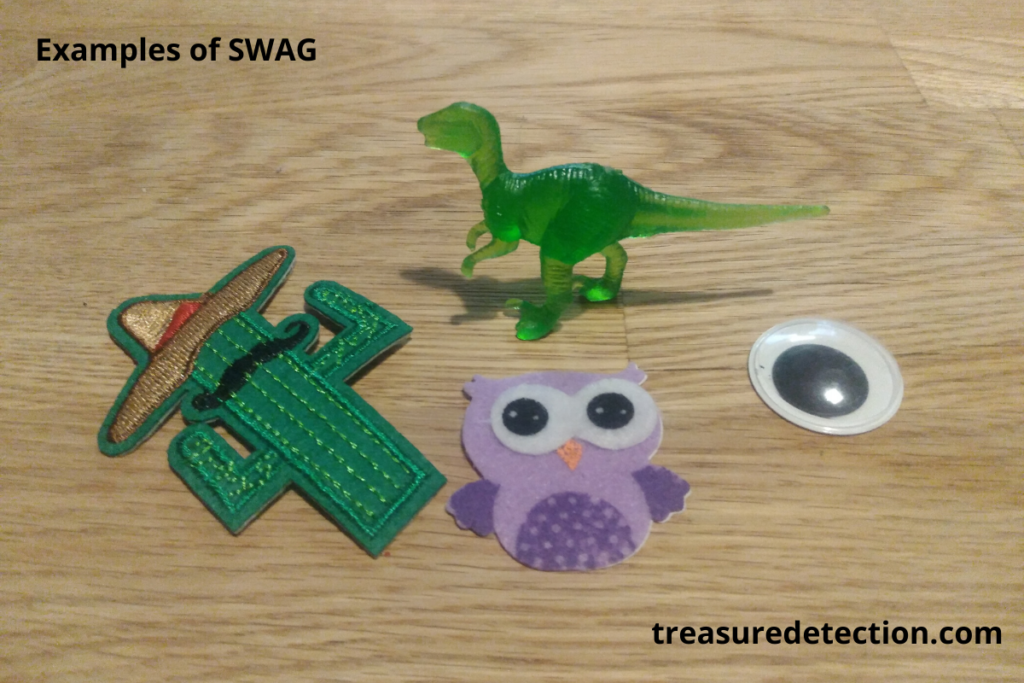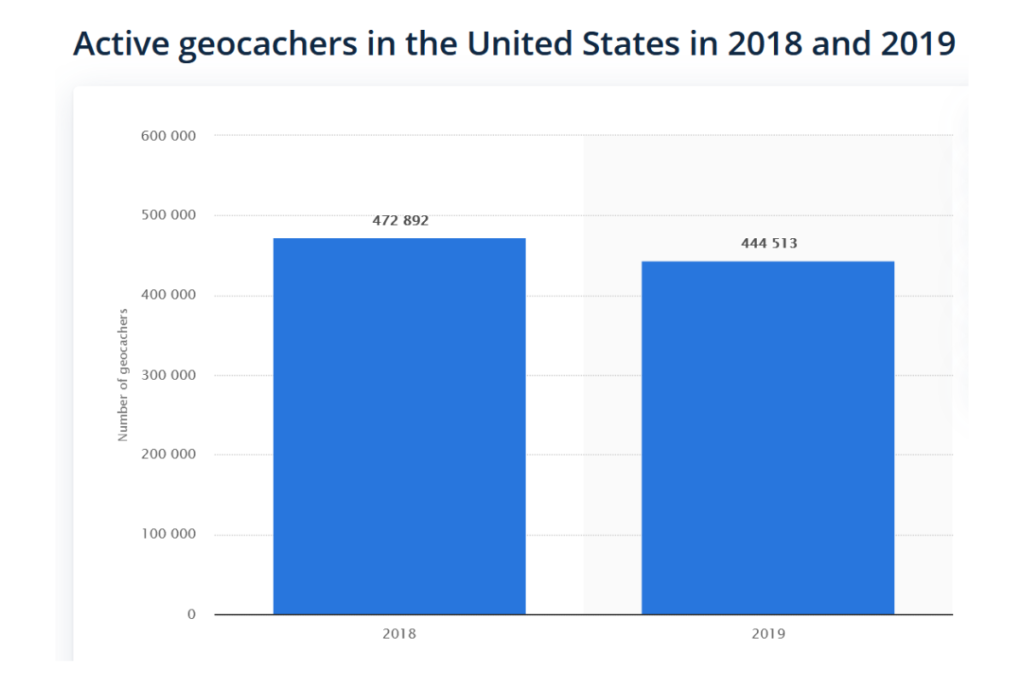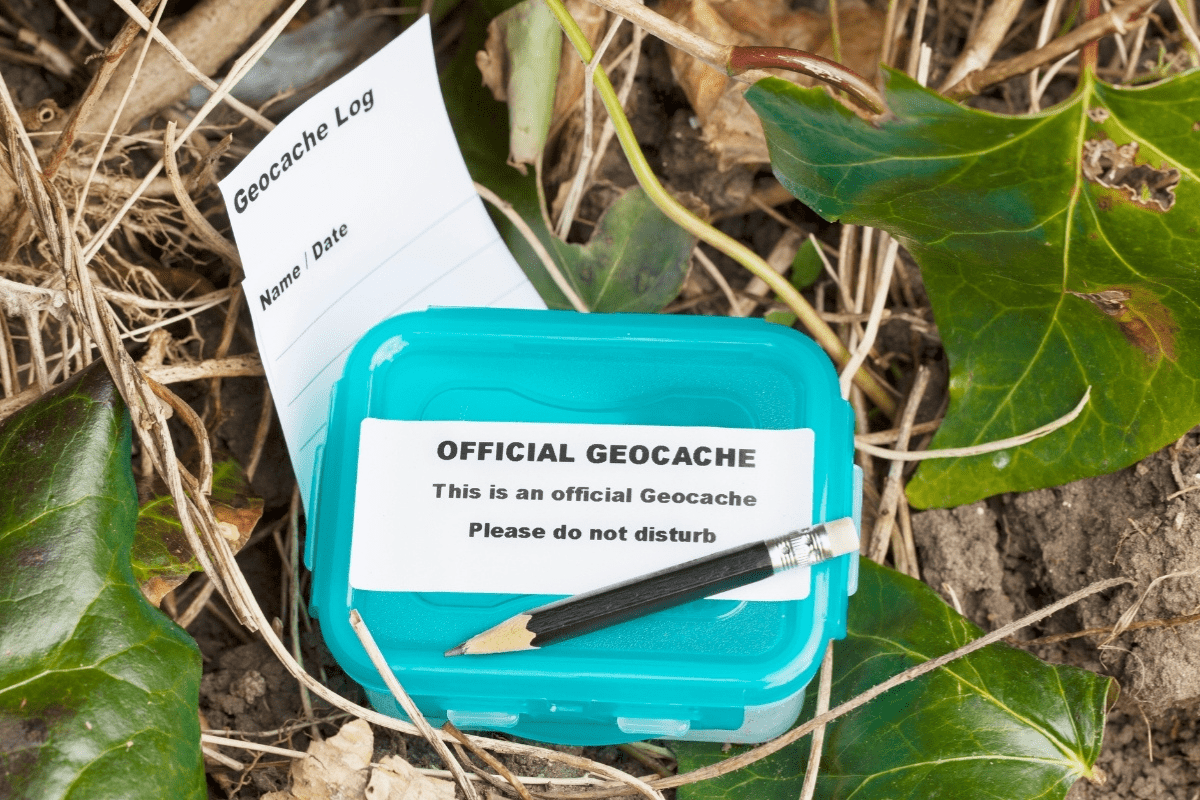Have you ever heard of geocaching? If you haven’t, you’re in for a treat! If you have, but you want to know more, we are going to teach you everything you need to know, to get started with this fun hobby.
Geocaching for Beginners
A geocaching beginner will need to start by reading all of the rules. Next, they will want to download the app and start looking for geocaches. You will need to bring a pen, to sign the log, and a few small treasures to leave in the geocaches.
This is one of the easiest and least expensive hobbies that you can get started with. Anyone with a cellphone and a pen can journey around the world, finding these awesome geocaches, penning down their name among the geocaching elite.
My favorite part about geocaching is that there are very few rules to follow, it mostly comes down to your treasure hunting skills, and your ability to use clues to find what is hidden. Let’s look at some of those rules and skills, and how to get started with geocaching today!
If you have any questions about what geocaching is, visit our article here.
How do I Start Geocaching?
Geocaching is a great way to get some exercise and to sharpen your treasure hunting skills. You will start by downloading the geocache app. This is a free app that is available from the official Geocaching website. You’ll need a few basic things to get started.
- Cellphone or GPS Device
- A pen to sign the logbooks
- Some SWAG (small trinkets)
You will need to the cellphone with a data plan to use the geocaching app and website. These will allow you to read clues, find geocaches, and more. The pen is for signing the logbook, most geocaches come with a small logbook, where you sign your name and the date.
The SWAG, also known as “Stuff We All Get,” are usually small trinkets that people leave behind. If you find the geocache and there is SWAG, you can take one trinket as long as you replace it with another of equal value. Many people use small items, like marbles, stickers, and small army men.
Geocaching is allowed in many public places, state parks, national parks, and more. Source.
What Should I Bring Geocaching?
If you are planning your first geocaching adventure, then there are a few things you will want to bring with you. Here is a short checklist on what to bring, and why you should bring it. Not everything on this list is mandatory.
- Your phone/GPS
- A friend
- Pen or pencil
- Flashlight
- Camera
- Utility tool
- SWAG
- Retractable mirror
The phone and GPS are used to locate the geocache. We suggest bringing a friend with you because the partner system works great for safety. The pen or pencil is to sign the logbook. You will want a flashlight since the geocache could be hidden in dark, hard-to-reach places.
You should bring a camera so that you can take awesome pictures of your finds and post them on the app! You can also post them to your social media, to show off your treasure hunting skills.
A utility tool may be needed to get into the geocache, or pry away at something, to get to the geocache. A pocket knife or utility tool will work just fine for this. Plus, it’s always good to have those things on you anyway.
The SWAG is for taking and replacing trinkets, inside of the geocache. Not every geocache has swag inside of it. Some geocaches are so small you wouldn’t be able to fit anything inside. I like to have a variety of items, different sizes, and different types of things, to leave behind.
The retractable mirror can help you look underneath things. Some geocaches are hidden very well and can be hard to get to or to locate. A retractable mirror allows you to get a glimpse into spaces that aren’t as accessible, or down low.
What Are the Three Main Rules of Geocaching?
The geocaching website lists three main rules for geocaching. As long as you follow these three best practices, you will be able to keep up with geocaching etiquette.
Rule number 1, if you take something from a geocache, leave something else of an equal or greater value, than what you took. If there are trinkets, but you have nothing to give, don’t take anything.
Rule number 2, if there is a logbook, sign your name, and any other details that it allows you to write down. This could be your name, the date, the time, and other fun information.
Rule number 3, after you have found your geocache, and then moved on, log your experience at the official geocaching app/website. You can leave notes on how difficult it was, just do not give away any details about the exact spot.
What Is a Muggle in Geocaching?
Here’s the thing, you know that you are geocaching, but everyone else just sees a person rummaging through the woods, and tinkering with things in public. Those who are not in the know, are known as muggles.
Muggles might call the police, thinking you are up to no good. Or if they are paying enough attention, they may watch you return the geocache and then go to it and snatch it up! Not all muggles are going to take the geocache, or cause trouble for you, however, you should try to be as discreet as possible.
If someone is curious about what you are up to, then tell them all about it! Chances are they will find it just as fascinating as you or I do. If you find a geocache spot, but there are too many muggles around, wait a little while, until they leave before you approach the geocache.
Geocaching SWAG
Now onto the SWAG. As mentioned, swag stands for “Stuff We All Get.” Some geocaches are large and can fit large trinkets, like playing cards, toys, and other cool items. Others may be small and will only fit things like marbles or small stickers.
Some geocaches have certain rules for what should be left as swag, so make sure you read all of the details about your spot on the app. The more you read about the spot, the more prepared you will be.
Swag for geocaching:
- Marbles
- Toy soldiers
- Stickers
- Crystals
- Coins
- Jewelry
- Keychains
- Miniature items
- Kids meal toys
- Hot wheels
- Travel bugs
It is better to have a variety of items so that you can leave something appropriate for that specific geocache. It is always best to read up on the spot before you go, to see what rules or items are being left.
Not all of the trinkets are for children. Sometimes people leave coins, jewelry, tokens, crystals, and other items that are for all ages. There is also a trinket called a travel bug, that has a trackable number.
These cool little bugs allow you to keep track of your bug, and assign goals, like traveling to different geocaches or making it to another country.

Geocaching Tips for Beginners
If you are just starting, then there are some tips that you may want to consider before you start your journey. These geocaching tips will help you understand how it works, best practices, and how to stay safe.
Use the buddy system when geocaching. If you are geocaching, that means you are going to be out in public, and in places where danger could be lurking. We suggest bringing a friend along. They will have fun, and it will help keep you safer.
Don’t take a trinket if you do not have a replacement. If you do not have a trinket to leave in return, do not take one. If you have trinkets but they will not fit, then do not take one. Keep up with the rules.
Wait for spots to die down before you search. If there is a lot of muggle foot traffic at your spot, then you may want to consider letting it die down before you attempt to locate the geocache. This can help you be more discreet, and keep muggles off your find.
Don’t give away the exact spot. If you are logging your experience online, do not give up the exact spot where the geocache is found. You will have the coordinates, but finding the exact spot is up to the geocacher.
Use the “Leave No Trace” best practice. LNT Link. When you are out searching for geocaches, do not leave any garbage behind. Some people will bring trash bags to collect and throw away the garbage. Try not to damage any plant life as well.
Geocaching Stealth Tips
Sometimes being stealthy is an important part of geocaching. Being stealthy keeps muggles from finding the geocache, and keeps you from having to talk to police or others, who might think you’re doing something shady.
Wear a utility vest. Super stealthy tip – wear some type of road vest or utility worker vest. The kind with the neon colors and reflective stripes. You can even carry a road cone with you if the geocache is located on the side of the road.
Go at night. If the spot is too hot during the day, wait and come back during the night. You will want to bring flashlights, and make sure to bring someone along with you so you aren’t taking any risks.
The utility vest can help make you look like you’re supposed to be there. This is only for the diehard geocachers, that want to up their stealth game. Going at night is fine, as long as you have a partner, and keep things lowkey.
Is Geocaching Safe?
So now that you know the best practices, and beginner tips, you may be wondering, is geocaching safe? Someone could hide something dangerous, or you could be seen by someone who is a predator. The fact is, just like with anything you do out in the public, you need to take precautions.
If you are letting your kids do geocaching, make sure you or someone else is supervising their experience. Oftentimes, you will have to go into the woods and other remote spots. Always be aware of your surroundings.
It is also important that you read what others have written about the spot before you visit it. The app will have details, and reviews from others who have visited the geocache. There could be warnings, or at the very least there will be some advice on things to avoid. There are currently over 400,000 active geocachers in the United States. See our full article on is geocaching safe, here.

Related Questions
Is geocaching for adults?
Geocaching is for all ages. It can be a fun hobby for both adults and children. The kids should be supervised while geocaching. This can be a great way to get exercise and explore new areas.
Are geocaches hard to find?
Some geocaches are harder to find than others. Some are completely obvious, while others can be well-hidden, camouflaged, or hidden in areas that are hard to get to. The app shows a difficulty level for each geocache.

